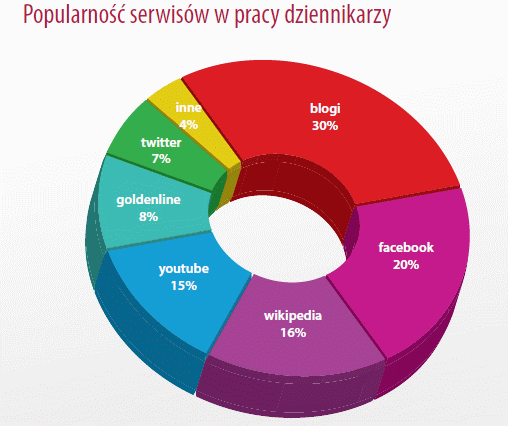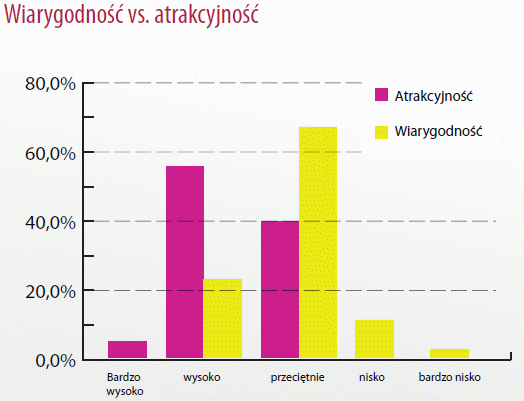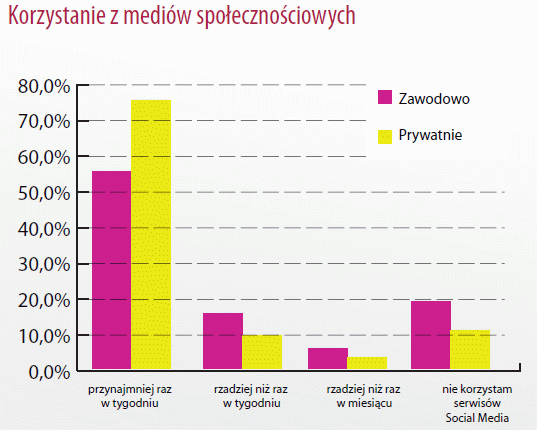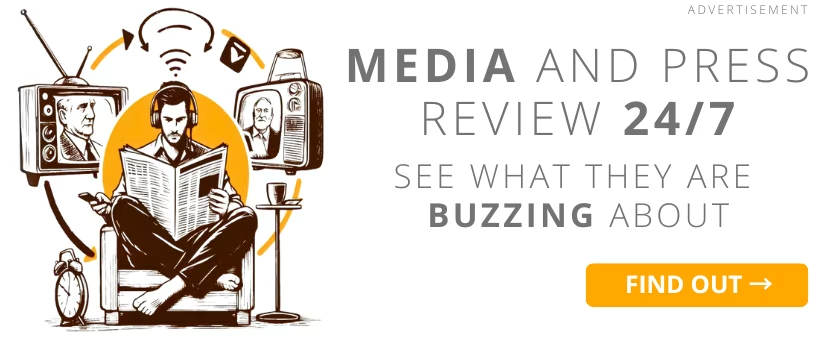 Multi Communications, Journalists and Social Media 2011
Multi Communications, Journalists and Social Media 2011Journalists most often visit blogs, which are also considered the most reliable sources of knowledge and information among all social media platforms. Facebook ranks second in both popularity and credibility, with Wikipedia following in third place. This pattern shows that the ranking for credibility aligns with the popularity ranking.
 Multi Communications, Journalists and Social Media 2011
Multi Communications, Journalists and Social Media 2011The Multi Communications study reveals that information found by journalists on social media is considered more attractive than credible. A quarter of respondents rated the credibility of such information as high, but none rated it very high. On the other hand, no one rated the attractiveness of social media content as low or very low. Around 60% of respondents rated the credibility of these sources as high or very high.
 Multi Communications, Journalists and Social Media 2011
Multi Communications, Journalists and Social Media 2011Polish journalists admit to frequently using social media platforms. Nearly two-thirds use them regularly for work, while even more use them for personal purposes, with about three-quarters of media workers indicating personal use.
 Multi Communications, Journalists and Social Media 2011
Multi Communications, Journalists and Social Media 2011The survey was conducted independently by Multi Communications in November 2011. Over 110 journalists from various media types (e.g., press, internet, TV) and covering different topics (business, new technologies, lifestyle) participated in the study.
COMMERCIAL BREAK
New articles in section Media industry
Advertising market 2025. Poland, Europe and the World
Marcin Grządka
The global advertising market is growing by 8.8% in 2025 and will reach a value of 1.14 trillion dollars. The industry result in Europe records slightly lower dynamics, at the level of 5.8%. In this comparison, Poland performs clearly above the average. We will record an increase of 8.9% this year and a value of 18.56 billion PLN - estimates WPP Media in the annual report "This Year Next Year".
The print media market 2025. Three global trends
Krzysztof Fiedorek
The market value is 359.53 billion dollars, yet the erosion is visible to the naked eye. The decline for newspapers will amount to -2.3 percent. Despite this, print retains strength: it generates 76 percent of subscription revenues and enjoys 82 percent consumer trust. The future of the industry is defined by hybrid strategies and niche specialization.
Journalism in the age of AI. Why people prefer humans over machines
Krzysztof Fiedorek
Only 12% of people accept news created solely by AI, while 62% prefer those written by humans. At the same time, only 19% notice labels indicating the use of artificial intelligence, while younger audiences ask AI to explain the content to them. These are the findings of the Reuters Institute report on artificial intelligence in media.
See articles on a similar topic:
Poles on the Internet. RegionyNEXERY 2024 Report
KFi
The Internet not only connects people but also changes their daily habits in ways that seemed unattainable just a few years ago. Over 40% of Poles work remotely, and IoT devices are gaining popularity in rural areas. The #RegionyNEXERY 2024 report reveals surprising facts about the digital reality.
Numbers Stations in Radio. For Puzzle and Cryptography Enthusiasts
Krzysztof Fiedorek
They broadcast seemingly meaningless strings of numbers and letters, sometimes short, encrypted messages. Some even play music between coded transmissions or broadcast propaganda. For over a hundred years, number stations have puzzled radio enthusiasts and mystery hunters. What do we know about them?
Investigative journalism in Europe. Newsrooms face pressure
KFi, Newseria
Media and political representatives point to the difficult situation of investigative journalism in Europe. Newsrooms are reluctant to invest in this segment due to high costs and the large amount of time and effort required. Most of all, however, they fear legal proceedings.
Most medical influencer posts on TikTok are FALSE
KFi
Researchers from East Carolina University Health Medical Center analysed 120 TikTok videos tagged with hashtags such as #naturalparenting, #antivaccine, and #holistichealth. The results of their study leave no doubt.





























